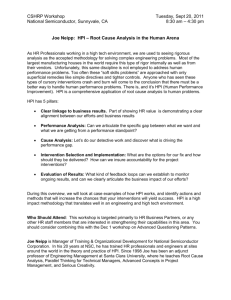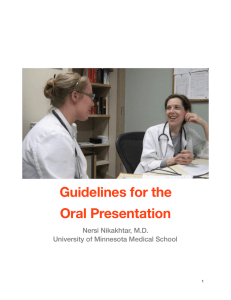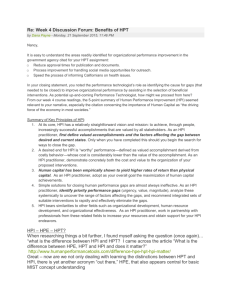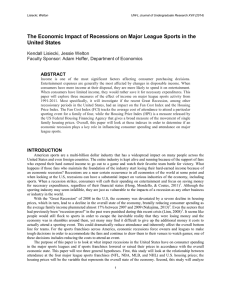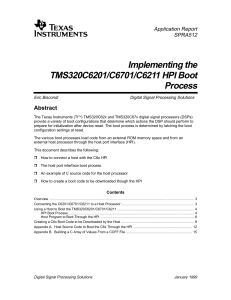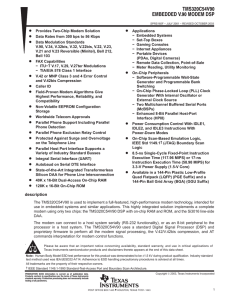Sample Poster Template
advertisement
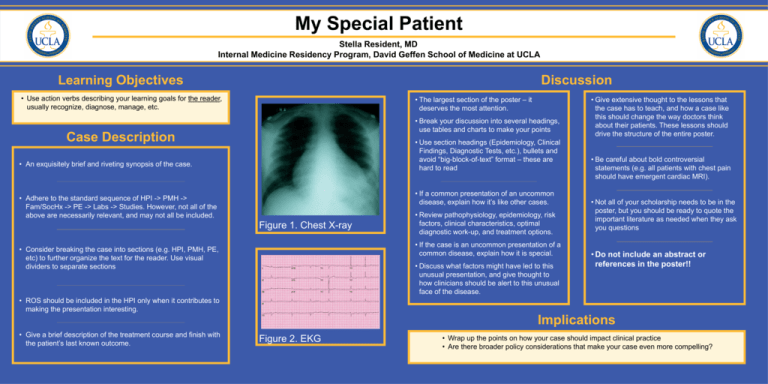
My Special Patient Stella Resident, MD Internal Medicine Residency Program, David Geffen School of Medicine at UCLA Learning Objectives Discussion • Use action verbs describing your learning goals for the reader, usually recognize, diagnose, manage, etc. • The largest section of the poster – it deserves the most attention. • Break your discussion into several headings, use tables and charts to make your points Case Description • Use section headings (Epidemiology, Clinical Findings, Diagnostic Tests, etc.), bullets and avoid “big-block-of-text” format – these are hard to read • An exquisitely brief and riveting synopsis of the case. • If a common presentation of an uncommon disease, explain how it’s like other cases. • Adhere to the standard sequence of HPI -> PMH -> Fam/SocHx -> PE -> Labs -> Studies. However, not all of the above are necessarily relevant, and may not all be included. Figure 1. Chest X-ray • Review pathophysiology, epidemiology, risk factors, clinical characteristics, optimal diagnostic work-up, and treatment options. • If the case is an uncommon presentation of a common disease, explain how it is special. • Consider breaking the case into sections (e.g. HPI, PMH, PE, etc) to further organize the text for the reader. Use visual dividers to separate sections • Discuss what factors might have led to this unusual presentation, and give thought to how clinicians should be alert to this unusual face of the disease. • Give extensive thought to the lessons that the case has to teach, and how a case like this should change the way doctors think about their patients. These lessons should drive the structure of the entire poster. • Be careful about bold controversial statements (e.g. all patients with chest pain should have emergent cardiac MRI). • Not all of your scholarship needs to be in the poster, but you should be ready to quote the important literature as needed when they ask you questions • Do not include an abstract or references in the poster!! • ROS should be included in the HPI only when it contributes to making the presentation interesting. Implications • Give a brief description of the treatment course and finish with the patient’s last known outcome. Figure 2. EKG • Wrap up the points on how your case should impact clinical practice • Are there broader policy considerations that make your case even more compelling?






